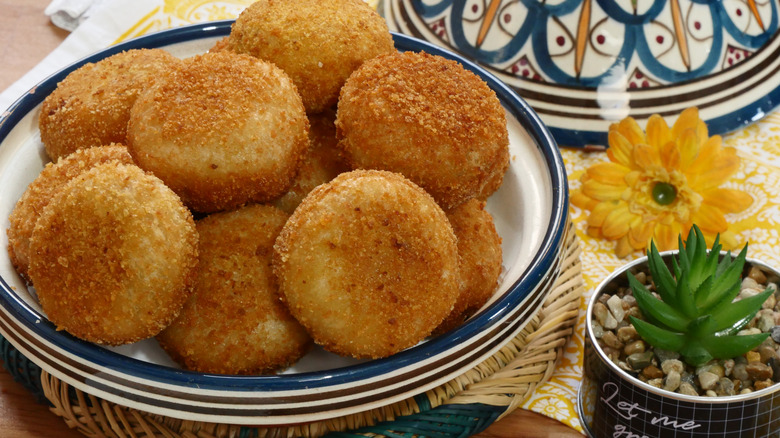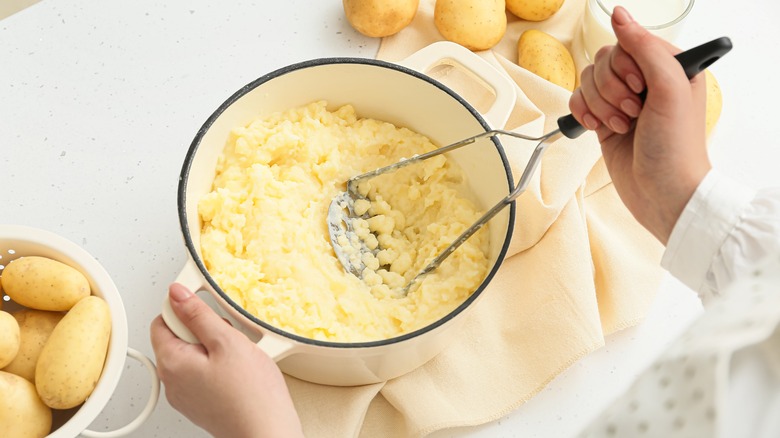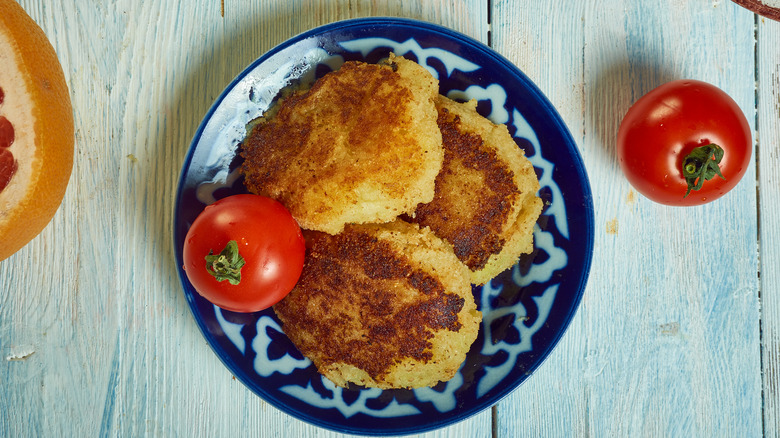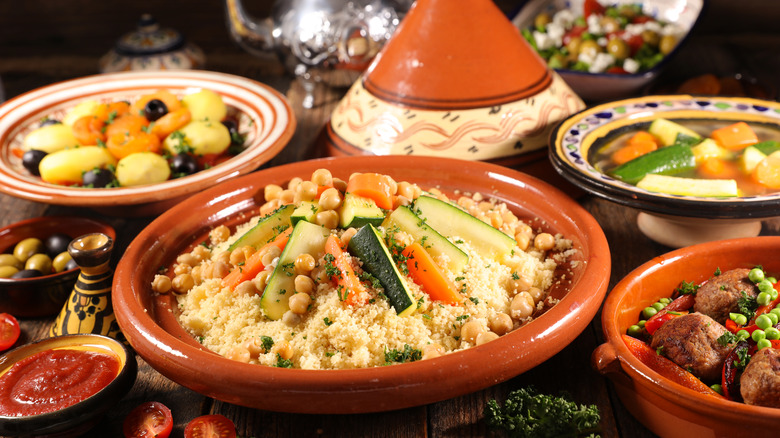The Fried Potato Dumplings That Are A Staple Of Morocco's Street Food
Fried. Potato. Dumplings. Those three words are enough to evoke internal cravings on their own. But, when the three are put together, something greater awakens. Suddenly, you've been made aware that there's a snack food with all the convenience of a dumpling, the soft and warm texture of a potato, and the signature crispy crunch of all your favorite fried foods, all in one bite. As if the FOMO wasn't already difficult to bear, Morocco World News claims that the snack food of your dreams is one of the country's signature street foods, where it can be found strolling around almost any city, served hot and fresh.
Known as maaqouda, maqouda, or maakouda throughout the Maghreb (via 196 Flavors) — a region made up of the northern-most countries in Africa, including Tunisia, Algeria, Libya, Mauritania, and Morocco, per The Spanish Ministry of Foreign Affairs — the crispy potato patties include many of the vibrant herbs and spices that the region prides itself in. In a country like Morocco which is famous for its couscous, meatballs, and stews, maakouda is considered a must-try if you want to experience the country's street food scene.
How maakouda are made
Compared to many Moroccan recipes, which can be notoriously time-consuming to prepare, maakouda are relatively quick and simple to make. However, according to 196 Flavors, they will require some mastery, as the potatoes will need to remain adequately dry to keep the patties from falling apart. For this reason, potatoes tend to be baked rather than boiled. Then, while they're in the oven, all of the spices and herbs that get mixed into the potatoes are prepared, including salt, pepper, cumin, fresh or ground onions, garlic, turmeric, fresh parsley, and cilantro.
When the potatoes are finished baking, they are allowed to cool, peeled, mashed, and mixed in with the rest of the ingredients, along with breadcrumbs and eggs — but only enough to bind the mixture, and no more (per The Spruce Eats). They're then formed into balls by hand, coated in flour, and dropped into frying oil, where they'll stay for a few minutes until they're perfectly golden brown.
Variations and ingredients
While they may be simple, there are also many different variations of maakouda out there. For one, the look and texture are sometimes altered by using grated potatoes rather than mashed. Additionally, ingredients like tuna, ground meat, and cheese can be added, while others can be omitted or even substituted. For example, The Spruce Eats says that turmeric is entirely optional, although it does give the maakouda a nice color.
Those who are gluten-intolerant, or simply don't eat gluten, will be happy to know that gluten-free breadcrumbs and flour can easily be substituted in maakouda recipes. The same can be said for vegans, as maakouda are more commonly served plain — without cheese or meat — and can be made with an egg alternative. In this case, Kate Hackworthy, a columnist, author, and founder of the award-winning vegan and vegetarian food blog Veggie Desserts, specifically recommends using a flax egg.
How maakouda are served
Traditionally, maakouda is prepared during Ramadan, the holy month on the Islamic calendar (per Britannica). They're typically served as an appetizer or side dish as they pair well with many other traditionally popular Ramadan foods. Veggie Desserts recommends serving them with the north African equivalent to ketchup, known as harissa paste, another food native to the Maghreb region, made from a blend of red peppers, chilies, garlic, citrus, and spices (via The Mediterranean Dish). Maakouda is also a fabulous side to tagine, which, according to MasterClass, is both a traditional Moroccan dish and a cooking vessel.
On the city streets, however, maakouda is typically served one or two ways; on its own with a dipping sauce (which is more than likely harissa) or as a sandwich, particularly on wedges of fresh khobz, a crusty Moroccan bread, with lettuce and tomatoes (via Taste of Maroc, The Spruce Eats).



